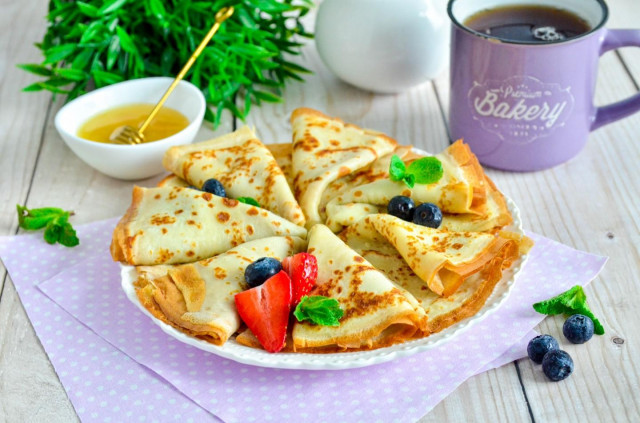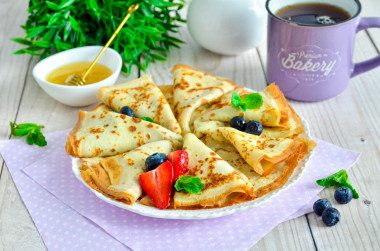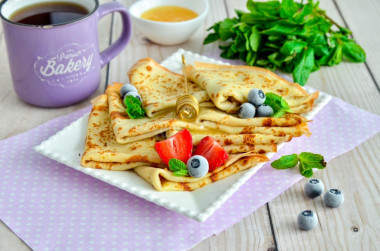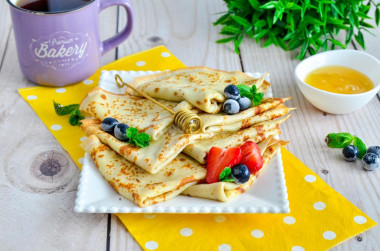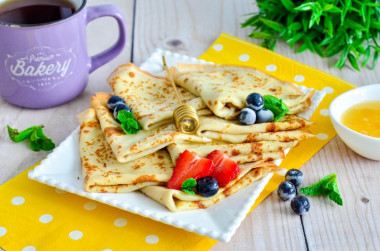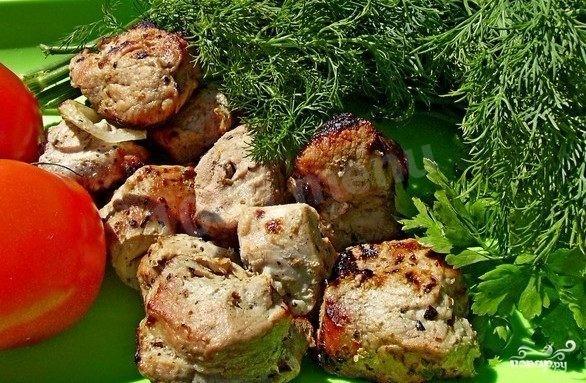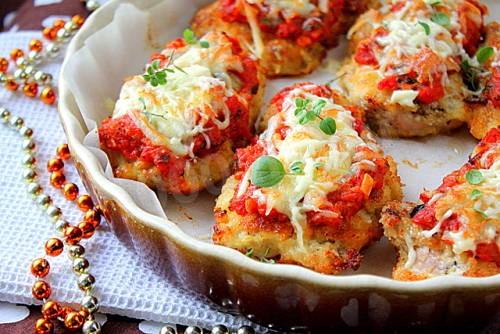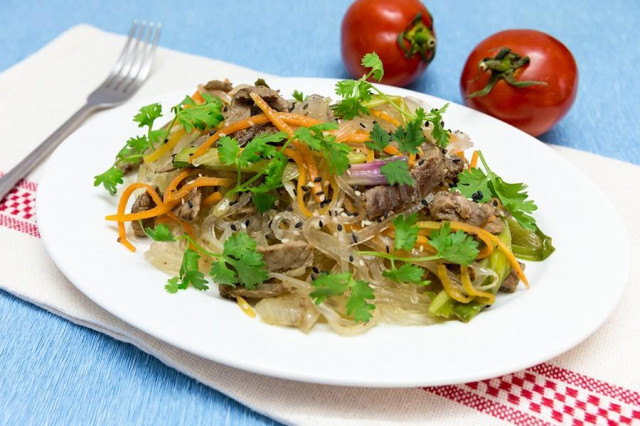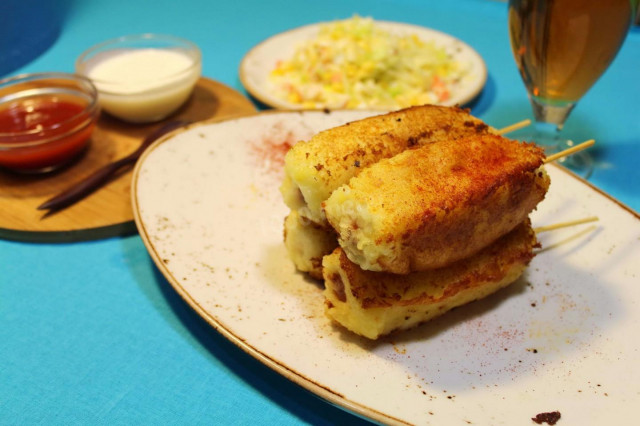Composition / ingredients
Step-by-step cooking
Step 1:
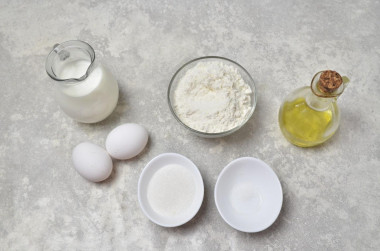
How to make pancakes with milk without yeast? Prepare the products. The amount of both flour and milk in this recipe is measured quite accurately, I did not reduce or add, it is very convenient. Eggs take category C1. Odorless oil.
Step 2:
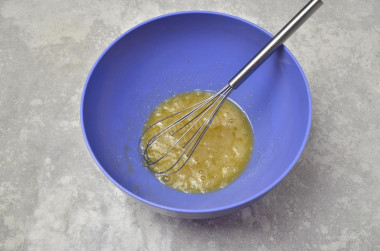
Take a dough bowl, beat the eggs into it. Be sure to wash the eggs before use, as even the seemingly clean shell may contain harmful bacteria. It is best to use food detergents and a brush. Add sugar and salt to the eggs. You can adjust the amount of sugar to your liking, with two spoons the pancakes turn out to be noticeably sweet. Beat the eggs with sugar and salt with a whisk.
Step 3:
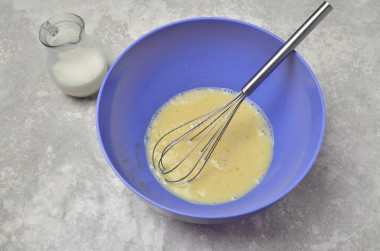
Pour 150 ml of milk to the beaten eggs, mix with a whisk.
Step 4:
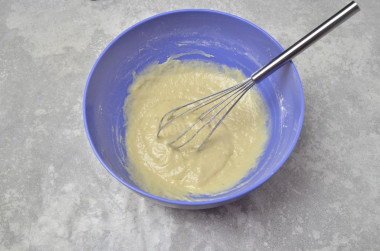
Sift all the flour to the egg-milk mixture. Mix it with a whisk. It will turn out to be a fairly thick mass, as it should be. This way you will avoid the formation of lumps in the pancake batter.
Step 5:
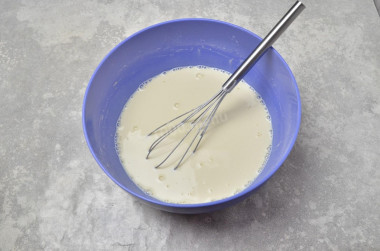
Pour in the remaining milk in portions, stirring the dough well with a whisk each time. An ordinary hand whisk will be enough, it will cope no worse than a mixer. The result is a completely homogeneous dough, without a single lump, liquid in consistency. Pour vegetable oil into it and mix — due to this, the pancakes will not stick to the pan. Be sure to leave the dough to stand for at least 30 minutes, then the pancakes will not tear when turned over.
Step 6:
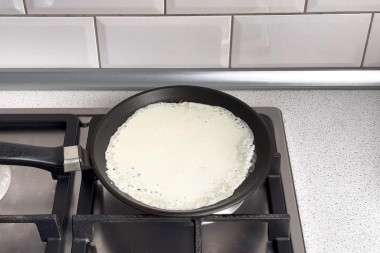
It is even better to put the bowl of dough in the refrigerator overnight. It is very convenient to knead the dough in the evening, and fry pancakes for breakfast in the morning. I did exactly that. In the morning, take the bowl of dough out of the refrigerator and mix it actively. Heat a pancake pan over high heat. Drop a little vegetable oil on it. Pour a small amount of dough, distribute it in a circular motion throughout the pan. Adjust the thickness of the pancakes yourself.
Step 7:
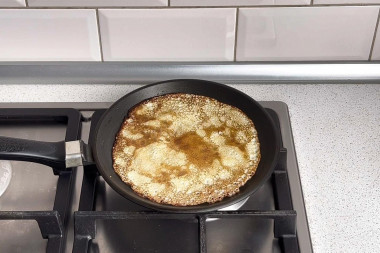
Fry the pancake on one side until browned, then turn it over on the other. Remove the finished pancake on a plate. Pour the next portion of the dough into the pan, it is no longer necessary to lubricate with oil — the oil in the composition will start working. Fry all the pancakes in this way. Adjust the fire so that the pancake is fried quickly, but does not burn at the same time. I got 14 pancakes from this amount of dough, the diameter of the pan is 18 cm.
Step 8:
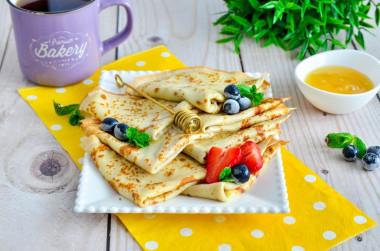
Serve pancakes to the table with sour cream, honey, jam or condensed milk. Enjoy your meal!
It is important to sift the flour to saturate it with oxygen. Then the baking will turn out to be airy and will rise well when baking.
Important! An incorrectly selected frying pan can ruin even the best recipe. All the details on how to choose the perfect frying pan for different dishes read here .
Any oils are useful only until a certain temperature is reached - the point of smoking, at which the oil begins to burn and toxic substances, including carcinogens, are formed in it. How to determine the roasting temperature and choose the best oil for frying, and which is better not to use at all, read here .
Caloric content of the products possible in the composition of the dish
- Whole cow's milk - 68 kcal/100g
- Milk 3.5% fat content - 64 kcal/100g
- Milk 3.2% fat content - 60 kcal/100g
- Milk 1.5% fat content - 47 kcal/100g
- Concentrated milk 7.5% fat content - 140 kcal/100g
- Milk 2.5% fat content - 54 kcal/100g
- Chicken egg - 157 kcal/100g
- Egg white - 45 kcal/100g
- Egg powder - 542 kcal/100g
- Egg yolk - 352 kcal/100g
- Ostrich egg - 118 kcal/100g
- Whole durum wheat flour fortified - 333 kcal/100g
- Whole durum wheat flour, universal - 364 kcal/100g
- Flour krupchatka - 348 kcal/100g
- Flour - 325 kcal/100g
- Granulated sugar - 398 kcal/100g
- Sugar - 398 kcal/100g
- Vegetable oil - 873 kcal/100g
- Salt - 0 kcal/100g

